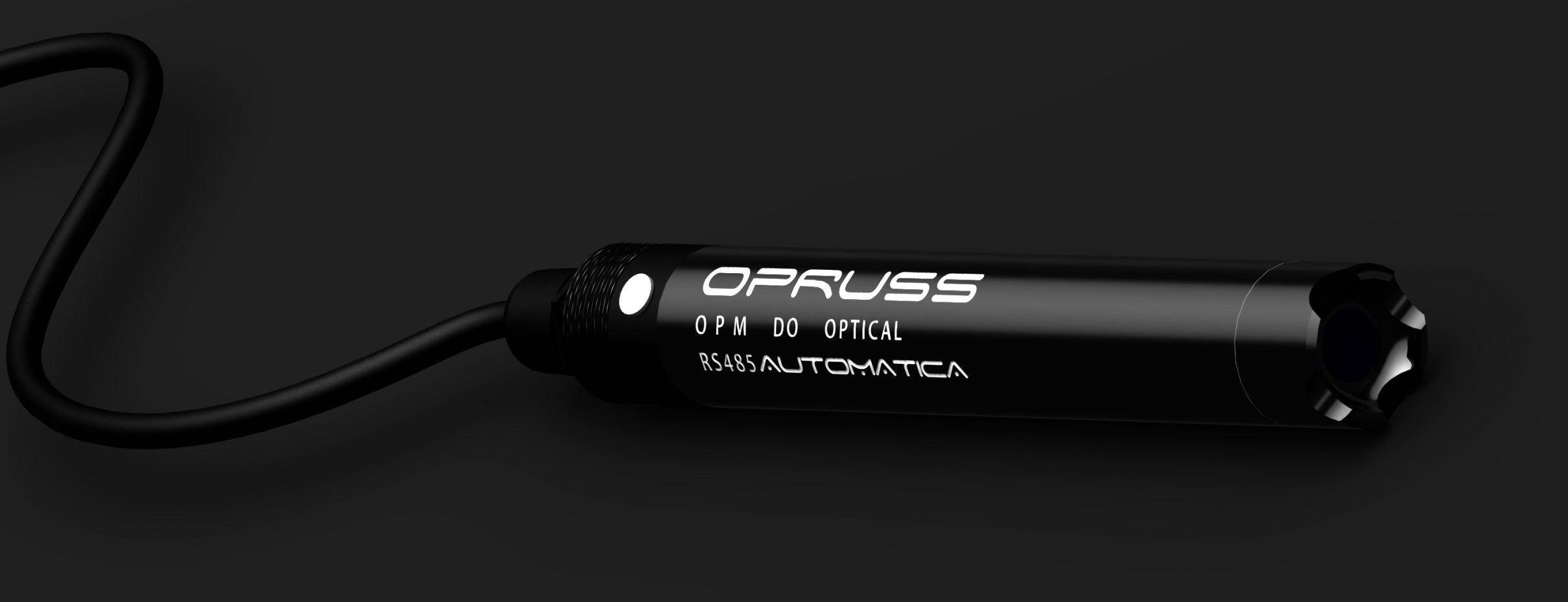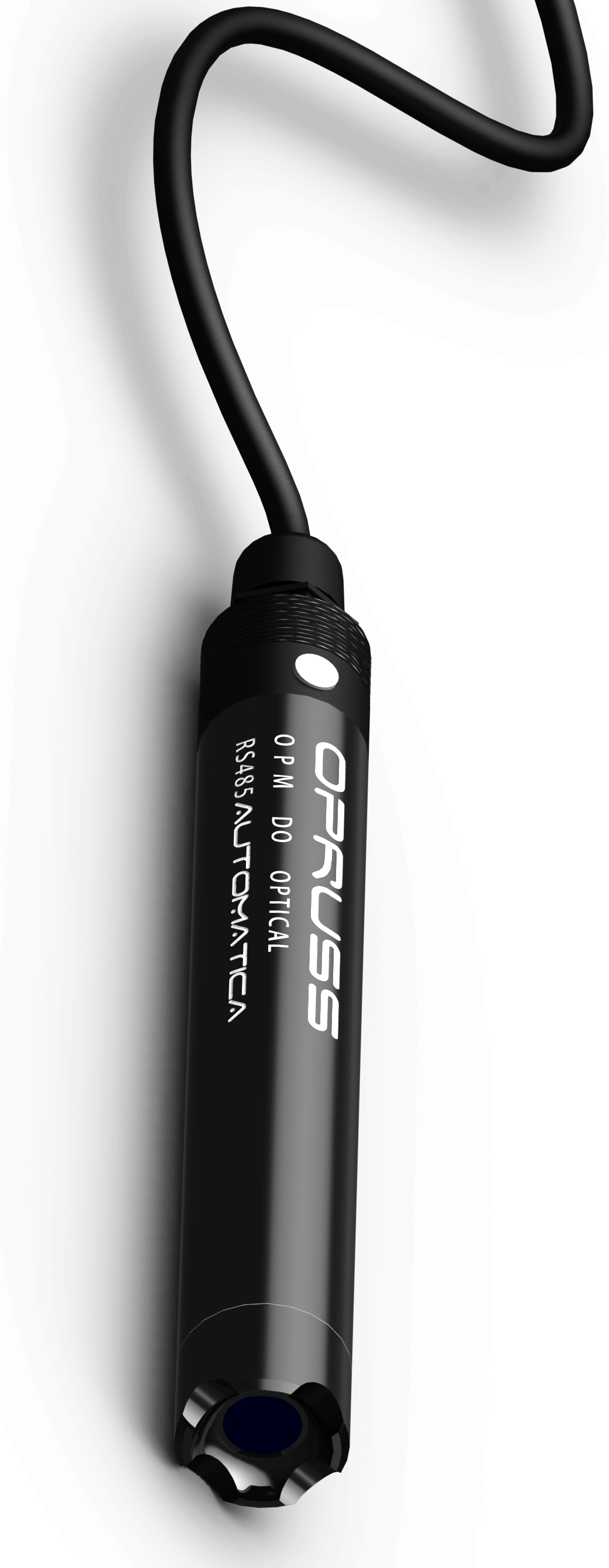OPM DO OPTICAL
Sensor for measuring Dissolved Oxygen in Aqueous Medium

- RS485 Digital signal output
- Plug and play design
- Ultra-rigid cable for on-field use
- Enabled with remote accessed calibration
- Non-corrosive POM PEEK shell
- Built in interference cancellation
- No consumable items
- Anti-surface deposition material
- EPA approved Optical luminescence method
- Shock proof sensor aperture
- Easy Calibration
- Tested for perfection
Dissolved oxygen is nothing but the level of free, non-compound oxygen present in water or other liquids. It is very important parameter in determining the water quality because of its influence on the organisms living within the water body. In the study of lakes, dissolved oxygen is an essential factor second only to water itself. A dissolved oxygen level that is too high or too low can harm aquatic life and affect water quality.
Free oxygen (O2) is oxygen that is not bonded to any other element. Dissolved oxygen is the presence of these free O2 molecules within water. The bonded oxygen molecule in water (H2O) is in a compound and does not count as dissolved oxygen levels. Free oxygen molecules dissolve in water just like salt or sugar does when it is stirred.
Dissolved oxygen is necessary to many forms of life including plants, fish, invertebrates and bacteria. These organisms use oxygen in respiration, similar to organisms on land. The amount of dissolved oxygen needed varies from creature to creature. Shallow water fish need higher levels (4-15 mg/L) and bottom feeders, crabs, oysters and worms need minimal amounts of oxygen (1-6 mg/L). Microbes such as bacteria and fungi also require dissolved oxygen. These organisms use DO to decompose organic material at the bottom of a body of water.
Dissolved Oxygen Levels
Dissolved oxygen concentrations are constantly affected by diffusion and aeration, photosynthesis, respiration and decomposition. While water equilibrates toward 100% air saturation, dissolved oxygen levels will also fluctuate with temperature, salinity and pressure changes. As such, dissolved oxygen levels can range from less than 1 mg/L to more than 20 mg/L depending on how all of these factors interact. In freshwater systems such as lakes, rivers and streams, dissolved oxygen concentrations will vary by season, location and water depth.
Saltwater holds less oxygen than freshwater, so oceanic DO concentrations tend to be lower than those of freshwater. In the ocean, surface water mean annual DO concentrations range from 9 mg/L near the poles down to 4 mg/L near the equator with lower DO levels at further depths.

Unusual DO Levels Effects
If dissolved oxygen concentrations drop below a certain level, fish mortality rates will rise. In the ocean, coastal fish begin to avoid areas where DO is below 3.7 mg/L, with specific species abandoning an area completely when levels fall below 3.5 mg/L. Below 2.0 mg/L, invertebrates also leave and below 1 mg/L even benthic organisms show reduced growth and survival rates.
- Gas Bubble Disease Just as low dissolved oxygen can cause problems, so too can high concentrations. Supersaturated water can cause gas bubble disease in fish and invertebrates. Significant death rates occur when dissolved oxygen remains above 115%-120% air saturation for a period of time.
- Dead Zones A dead zone is an area of water with little to no dissolved oxygen present. They are so named because aquatic organisms cannot survive there. Dead zones often occur near heavy human populations. They can occur in large lakes and rivers as well.
UNIQUENESS OF OPM OPTICAL DO
The fluorescence dissolved oxygen sensor uses a new generation of fluorescence lifetime technology. OPRUSS independently develops high performance fluorescent materials. No anaerobic consumption, no flow restrictions, no electricity required. The solution requires no maintenance and calibration, no hydrogen sulphide, and excellent stability. Built-in temperature sensor and automatic temperature compensation. The RS485 output is suitable for networks without a controller.
The fluorescence dissolved oxygen sensor uses a new generation of fluorescence lifetime technology. OPRUSS independently develops high performance fluorescent materials. No anaerobic consumption, no flow restrictions, no electricity required. The solution requires no maintenance and calibration, no hydrogen sulphide, and excellent stability. Built-in temperature sensor and automatic temperature compensation. The RS485 output is suitable for networks without a controller
Installation methods
Medium immersed
- Sites with challenges like a distant medium source from the point of controller mount, this method of installation can be chosen.
- The analyser being constantly in contact with the medium helps the analyser to never face a dry-off situation
Extractive
- Where the sample enters and exits the system like a standard stationed measuring device. Usually avoids the Constantine medium matrix as the sample with variating quality flows through the device rather than a partially stagnant volume of medium.
- Sample extraction accessory is required for this type
OPM-DO
Send download link to:
